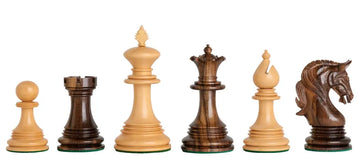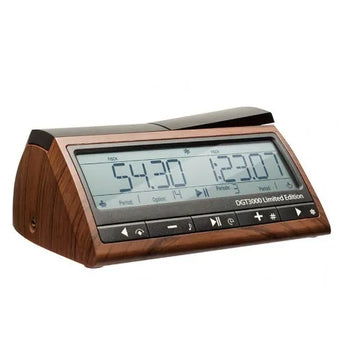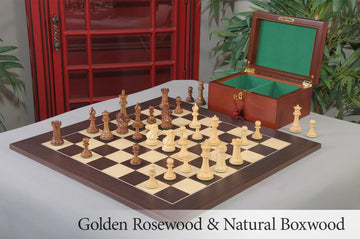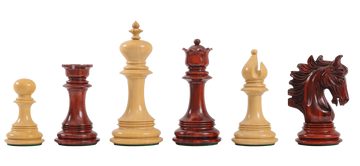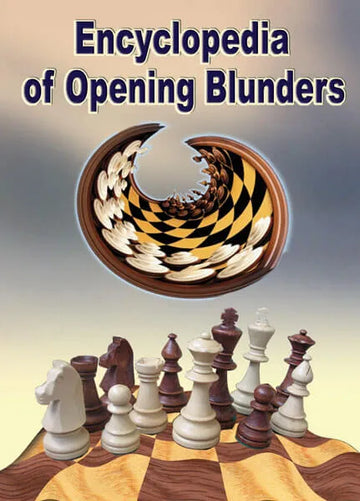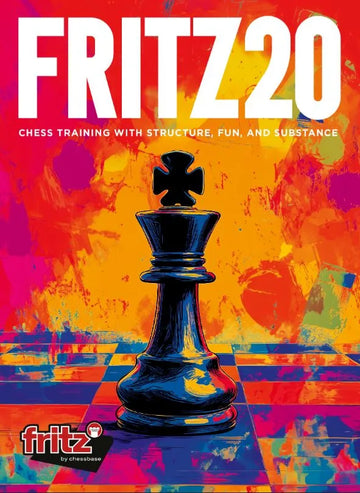How To Avoid A Horrible Chess Blunder
In chess, we often lose games because our opponent played better. But, if we’re being honest, many of us lose more games simply because we make a significant and avoidable error. One of the simplest ways to become a better chess player is to master the art of avoiding blunders.
In this article, we’ll look at some common types of blunders and lay out clear, simple, and actionable steps you can take to avoid them.

What is a Chess Blunder?
In chess, a blunder is a significantly bad move that gives your opponent a major advantage. It is a mistake big enough to potentially lose you the game.
In general, to blunder is to make a foolish or clumsy mistake. This somewhat translates to chess in the sense that blunders are unforced. Rather than minor errors in calculation or a slight positional misstep, blunders occur when players don’t notice a serious threat made by their opponent or make a move that gives up material.
Different Kinds of Blunders
The most common kind of blunder people make in chess games is losing a piece, but there are other ways to give your opponent a winning advantage.
Material Blunders
Certainly, at the beginner level, blunders happen mostly through giving away material. This may mean ignoring a threat on an unprotected piece, or “hanging” a piece. It may mean moving a piece to an unprotected square that your opponent is attacking.
You can also blunder material by failing to notice tactics. For example, failing to spot a fork, discovered check, or skewer.
Hanging Checkmate
Failing to protect your king is another common type of blunder. Blundering material is one thing, but if you do not identify threats near the king, this can often lead to a hanging checkmate. For example, a very common blunder at the beginner level is allowing a back rank checkmate.

Positional Blunders
You can blunder in a chess game without losing any material or allowing checkmate. By making poor moves, you can make your position extremely vulnerable to attack. Common examples include locking bishops behind pawns, giving up castling rights, ignoring king safety, and moves that give your opponent tempo. While this type of move doesn’t always constitute a blunder, in serious cases, it can give your opponent a completely winning position.
Simple Steps to Avoid Blunders
The good news about blunders is that they are avoidable. If you find you keep making mistakes in your chess games, there are simple steps you can follow to play more solidly.
For beginners, blunders are very likely the main reason you are losing chess games. As we’ll see, simply by practicing skills like board awareness and safe development, you can instantly increase the number of games you win.
Related: 10 Must Have Beginner Chess Books
Board Awareness
This is one of the most fundamental skills. Before you can become an excellent calculator, know all the positional principles of chess, or become a tactical mastermind, you need to see and understand a given position.
Beyond simply noting the position of pieces, board awareness means identifying squares that are controlled by you or your opponent, weak or dangerous squares, active pieces, the safety of your king, and much more. In terms of avoiding blunders, board awareness stops you from making obvious mistakes because you understand the threats and weaknesses in the position.
Scanning for Threats
A key part of board awareness is scanning for threats. While it may seem obvious, players often focus too much on their own moves, especially in the opening. You can immediately reduce your blunders by reminding yourself to check what your opponent is up to.
Specifically, you should:
- Check that none of your pieces are hanging
- See if your opponent can deliver any checks, even if they require a sacrifice
- Pay special attention to your vulnerable pieces and pawns
- Check if your opponent has any obvious tactics

Learning Common Traps and Tactics
Scanning for threats and assessing the board are all well and good, but what about the harder-to-spot blunders in chess games? While at the beginner levels, many players simply hang pieces, intermediates tend to fall prey to forks, pins, skewers, double checks, discovered attacks, and memorized traps.
To avoid this, learn the tactical motifs and the patterns that often lead up to them. Understand how dangerous a central knight can be, and how often you can lose a rook vs knight endgame due to carelessness. Remember that while you can move out of the way of one check, two at once can be devastating. Naturally, there are too many tactical motifs to describe here, but as you play and study, you will get better at recognizing these dangerous positions.
Many players will also learn opening traps and tricks. If your opponent makes a strange move, take time to consider it carefully. If your opponent is gambitting a piece or a pawn, ask yourself why. Often, what looks like a mistake is a planned move. Also, study common traps in your opening so you are prepared when someone tries one.
Developing to Protected Squares
Another way to easily minimize blunders is to build a position that is less susceptible to attack. When you develop your pieces, do so to squares that are protected by your pawns. Pieces developed to unprotected squares can often be captured. Even if they are not blundered, they are likely to be forced back by threats, giving your opponent more tempo.
In the middlegame, continue to focus on the safety of your pieces. Outposts are strong positions for your pieces that are protected by your pawns.

Related: The 10 Best Chess Openings For White
Minimizing Tunnel Vision
Tunnel vision is one common cause of players missing obvious moves. It refers to becoming obsessively focused on your plan to the extent of ignoring the vulnerability in your position or your opponent’s threats.
Much of this comes down to chess psychology. The solution is different for every player, but one trick is to ensure you are focusing as much on your opponent’s moves as your own. It’s still important to have a plan; to paraphrase Mikhail Chigorin, “A poor plan is better than no plan at all.” However, always consider carefully what your opponent is trying to do. This keeps you focused and aware, helping to minimize big mistakes.
Related: Chess Blindness
Avoiding Time Scrambles
Obvious mistakes drastically increase when you are under pressure. Any chess player can tell you about the correlation between blunders and being low on time. As such, working on time management during chess games is a key skill. There are various ways players deal with time controls, and it can be a weakness for players at the grandmaster level.
A high-profile example is when Gukesh Dommaraju defeated Ding Liren to become world champion. There were many factors at play, but Liren lost crucial games in which time pressure caused him to blunder.
Tips to Deal With Time Pressure
Here are a few common strategies chess players use to manage time:
- Set a maximum amount of time you want to spend on each move. This will depend on whether you are playing blitz, rapid, or classical chess. Of course, different moves require different levels of calculation, and you should vary accordingly. Nevertheless, having a guide helps to prevent time wasting and keep you ahead on the clock.
- Stay ahead of your opponent’s time. This is easier said than done and is not always the correct strategy if your opponent is playing fast and carelessly. However, it is often a great way to take pressure off yourself and put it on your opponent.
- Learn how to play solidly in a time scramble. Developing quick scanning techniques and strong intuitive play can help you when times get low.
Creating a Personal Checklist
One technique is to create a checklist that matches your particular tendencies when it comes to blundering. Often, players have a good understanding of why they blunder and lose chess matches. By writing a targeted checklist, you can counteract your weaknesses and become a stronger player.
It doesn’t need to be too complicated either. If you tend to rush, remind yourself to take a breath before you move. If you get tunnel vision, remind yourself to consider your opponent’s potential attacks and the safety of your pieces. If you often get forked by knights in the endgame, leave extra time to calculate your moves.
This kind of active and conscious play will go a long way to minimizing blunders.
How to React When You Blunder
“The winner of the game is the player who makes the next-to-last mistake."
This quote, attributed to Savielly Tartakower, expresses a helpful philosophy about blundering.
Making big mistakes in chess is inevitable. It happens to grandmasters, and it’s going to happen to you. While some blunders may end the game, many others don’t. Even if you’ve lost significant material or are at a major positional disadvantage, chess games can turn around quickly. Sometimes what looks like a blunder may turn out to be an accidental but brilliant sacrifice!
More often, you will have to scramble to equalize the game or try and gain an advantage. After realizing your mistake, take a moment to reassess the board. What advantages do you still have in the position? By capturing one of your pieces, your opponent may have lost tempo. Often players who are up material will also make brash moves or even blunder right back. This is why it is exceptionally important to stay calm and continue to calculate the next best moves.
Always remember that a blunder is not a loss!

